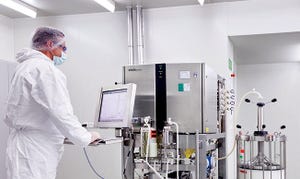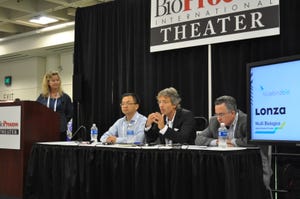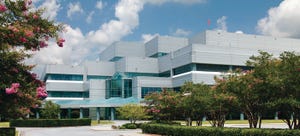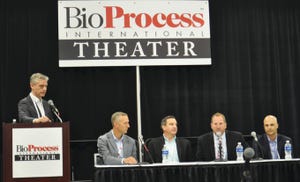September 2016 Supplement
When it comes to outsourcing, I sometimes worry that most of what can be said already has been. How many times do we need to focus on communication issues, which are still an essential element behind successful contract services relationships? As with so many subjects we cover, familiar outsourcing terminology can lead to the false assumption that an industry segment or technical process is pretty much the same as always. After all, speed and efficiency and cost-effectiveness have been goals for a long time — especially since the turn of the century.
Contract service providers always have been at the forefront of manufacturing and facility advances. They championed the first wave of multiproduct facilities back in the early- to mid-1990s, when regulations made those a viable choice. They were early embracers of single-use technologies and have participated in changing the vision of what a modern facility can look like. They provide special insights into the security of complex supply chains, contamination...
WWW.WACKER.COM
The market for biopharmaceutical contract manufacturing has shown robust growth over the past few years. The continuing growth of biopharmaceuticals and the increase in new and novel drug projects entering clinical pipelines are fueling the market’s double-digit growth rate. Responding to these new demands, contract manufacturing organizations (CMOs) are expanding both their capabilities and capacities.
Background
Information presented here draws from recent interviews with six executives at biopharmaceutical contract manufacturing organizations, and from HighTech Business Decisions’ latest report,
Biopharmaceutical Contract Manufacturing: Improving Markets, Services and Technologies
. That report uses primary research from senior-level executives and scientists at pharmaceutical and biotechnology companies and CMOs. For purposes of this article, HighTech Business Decisions defines
biopharmaceuticals
as complex molecular structures created through the genetic manipulation of living cells...
WWW.GRAPHICSTOCK.COM
In our modern biopharmaceutical industry, the maxim “bigger is always better” no longer applies. The industry’s modest virtual model persists in its popularity, emerging as a contemporary method of workplace efficiency. With an absence of manufacturing, virtual biopharmaceutical companies have found themselves unburdened by the multiple layers of bureaucracy that often plague large companies. With such freedom, they have operated much more efficiently in terms of time, resources, product specialization, and finances. As a result, virtual biopharmaceutical companies are growing in popularity because they strive to keep costs low and increase research output.
The Virtual Company Model
Virtual biopharmaceutical companies follow a model in which they employ few people (e.g., <50) and outsource most operations case by case from third-party organizations. Most start-up biopharmaceutical companies begin with a virtual model to ensure their success in competing with formidable, well-establish...
Left to right: Patricia Seymour, Chris Chen, Andreas Weiler, and Mark Angelino (Photo by Leah Rosin)
The biopharmaceutical industry is increasingly interested in a range of emerging therapies. “We’re really starting to get beyond the monoclonal antibody,” said Patricia Seymour (senior consultant with BioProcess Technology Consultants) in her introduction to a
lunchtime BPI Theater roundtable
at the 2016 Biotechnology Industry Organization annual convention in San Francisco, CA, this past June. The discussion brought together three industry insiders for strategic outsourcing to talk about emerging biotherapies and their manufacturing challenges:
Seymour first pointed out the differences between allogeneic and autologous cell therapies: The former is patient-specific; the latter involves “somewhat immortalized cell lines” from donors. They have different types of manufacturing concerns. Similarly, gene therapy platforms span a range of viral vectors and other delivery modes, some products overlapping with...
Patheon’s facility in Greenville, NC
Partnering with a contract development and manufacturing organization (CDMO) allows drug-product sponsors to turn fixed costs into variable costs. Market forecasting by pharmaceutical companies drives numerous decisions in development programs: sales-force resources, geographic resource distribution, and (of course) manufacturing planning. It is a widely accepted fact in the pharmaceutical industry that accurate forecasting is a challenge, especially for new drug launches. A number of models can be used to develop drug forecasts, but none of these models is perfect. No one model can account for all uncertainties in the global marketplace.
Forecasting will continue to be a challenge for biopharmaceutical companies. Innovative organizations will explore avenues to improve accuracy while also looking for ways to manage product risk in a volatile market. Flexible manufacturing solutions will become an attractive option for companies working toward more efficient business m...
DIGITAL VISION (WWW.GETTYIMAGES.COM)
No discussion about the future of the biopharmaceutical industry would be complete without assessing the impact of biosimilars. But such discussions no longer focus on whether biosimilars will enter the market, but rather when and how much market share will they take. The rapid progression of biosimilar candidates in company pipelines and the strong biosimilars research conducted by international organizations are strong indications that if your company is not already working within the biosimilars market, it may already be too late to start.
Besides proving the safety, purity, and efficacy of a biosimilar (by definition), developers should have strong supportive data showing comparability to the innovator drug product. To keep up with the rapid pace of development, some biosimilar manufacturers are seeking expertise outside their own facilities. In July 2016, I spoke with Niall Dinwoodie, global coordinator of analytical testing at Charles River Laboratories, to gain ...
Left to right: Gil Roth, Cory Lewis, Andrew Sandford, David Powell, and Rajan Puri (PHOTO BY LEAH ROSIN)
Outsourcing has become a critical part of the industry in general and will play a larger role as companies continue to seek faster and more cost-effective routes to market. On Wednesday 8 June 2016, Gil Roth (president of the Pharma and Biopharma Outsourcing Association, PBOA) chaired a lunchtime roundtable titled “
Making the Correct Outsourcing Decisions.
” Roth’s association is a nonprofit trade group that represents CMOs and CDMOs through work with Congress and the FDA, with a focus on intra-industry issues.
He brought together a panel of four experts:
Cory Lewis
is vice president of business development at Cook Pharmica (Bloomington, IN). He has been with the team for seven years and in the CMO space for the past 14 years. Cook Pharmica handles contract manufacturing for biologics, from cell culture manufacturing to vial filling, syringe filling, and cartridge filling. It also complements that wo...












